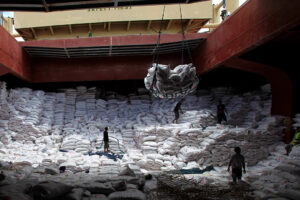THE Department of Agriculture (DA) said that it is expecting rice imports in 2025 to come in under the US Department of Agriculture’s (USDA) estimates of 4.2 million metric tons (MT).
“It’s possible that the projections of the USDA would change… we are expecting them to change,” Agriculture Assistant Secretary and Spokesperson Arnel V. de Mesa told reporters.
The USDA forecast Philippine rice imports for 2025 to exceed its revised estimate of 3.9 million MT for this year.
“Last year they projected 3.9 million MT, while we only imported 3.6 million MT. Early this year they projected 4.1 million MT, then they lowered it again to 3.9 million MT,” he added.
As of May 2, the Philippines had imported 1.6 million MT of rice, according to the Bureau of Plant Industry.
The USDA said that the import forecast for 2025 was based on an assumption of continued growth in consumption.
“The Philippines is expected to again be the largest global rice importer,” it said.
Agriculture Secretary Francisco P. Tiu Laurel, Jr. has described the USDA estimate as a “worst case scenario,” as the DA expects domestic production to increase.
The DA is projecting that palay or unmilled rice production to exceed 0 million MT.
The DA is also expecting a “more destructive” La Niña, which will follow an El Niño, which is thought to be weakening.
PAGASA (Philippine Atmospheric, Geophysical and Astronomical Services Administration), the government weather service, said that there is a 62% chance of La Niña occurring during June to August.
“It is possible that (La Niña) would occur towards the end of the year, where there will be stronger storms. By that time, we will have harvested for the wet season,” Mr. De Mesa said.
He added that once La Niña sets in later this year, the dry season planting for rice will be affected.
“It starts in October-November… So, it might have an impact later,” he said.
The La Niña phenomenon typically brings cooler average sea temperatures and above-normal rainfall.
He added that the average loss to agriculture during typhoons is about 500 to 600 thousand MT.
“Palay is typically affected by flooding, because losses are greater if flooding and typhoons are severe,” he said
The DA said it’s for La Niña focus on areas historically affected by the weather phenomenon. — Adrian H. Halili
